Easy ScrOG Without a Net: Simple Cannabis Plant Training
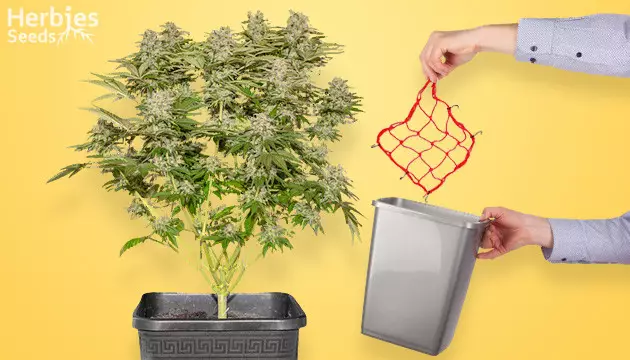
If you’re an indoor grower, chances are you’re always searching for cannabis plant training techniques to optimize your garden. Indoor growers need to be able to boost their yields while simultaneously managing the vertical height of their plants. One great way to do this is ScrOGging. There’s one problem, though. ScrOGging requires specialized tools – particularly trellis netting. Luckily, there are workarounds! In this post, we’ll explore how to ScrOG without a net.
What is ScrOGging?
ScrOGging is a way you can maximize your garden’s potential by training cannabis. The term “ScrOG” stands for “Screen of Green” and describes how your plants look when you execute the technique properly.
ScrOGging involves spreading a plant’s bud sites in a horizontally flat pattern beneath ScrOG netting. Give each bud site its own small square in the trellis netting. You must perform ScrOGging during the vegetative phase when your plants’ branches are soft, bendy, and malleable.
Using this technique, you can ensure that you have an even canopy. This allows light to reach each individual bud site, turning them into their own kolas. The end result? Increased yields with minimal larf. When indoor growers ScrOG cannabis, it eliminates many of the biggest problems they face.
While ScrOGging has plenty of benefits, it’s not perfect. First, you’ll need to buy trellis netting. Additionally, once you begin ScrOGging, you’re in it for the long haul. You can’t move your plants after you ScrOG them. As a result, it can be difficult to access plants in the middle of your garden when you need to water them or perform any pest mitigation.
Benefits of the Easy ScrOG Method
Ok, that all sounds great. But what if you don’t have a ScrOG net? Fortunately, a much simpler ScrOGging technique exists. This new, simple ScrOG setup doesn’t require any netting. As a result, it eliminates the need for specialized ScrOGging gear. Not only that, but you can still access plants in the middle of your garden using this technique.
Of course, you’ll still be able to reap the same benefits you would from normal ScrOGging. That means higher yields and better overall bud quality. Since ScrOGging also improves light penetration through your canopy, it can also contribute to overall plant health.
How to ScrOG Without a Net
Below, we’ll outline how to put together a simple ScrOG setup without using a trellis. This step-by-step guide will arm you with all the knowledge you need to implement this kind of setup in your own garden.
Step 1: Top Plants in Veg
Just like you would with normal ScrOGging, the easy ScrOG method begins with topping. Top your plants after they develop their fifth node. This creates two new kolas that grow wide and bushy instead of a single kola that spends all of its energy growing vertically.
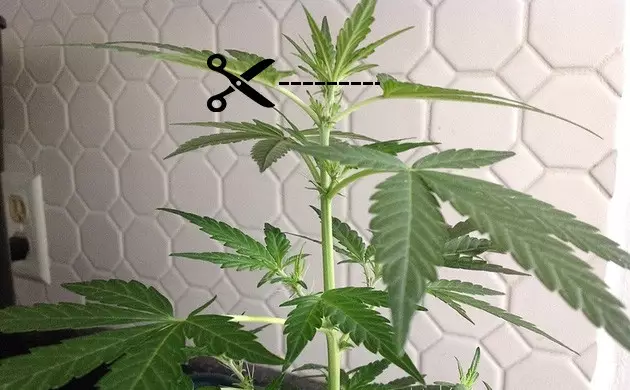
Continue to top any branch that grows past your canopy. Only top in the veg phase, though. If you top in the flower phase, your plants won’t develop two new tops. Instead, you’ll just be hacking off the top of your kola – no one wants that!
For more information on topping, see our in-depth guide.
Step 2: Bend Stems to Create Even Canopy
The next step in our easy ScrOG method, bend tall branches downwards to lower your total canopy height and spread branches out wider. Tie the branches to the lip of your pot using green twist tie.

This technique is similar to low stress training weed method, which we’ve covered in depth before. However, while LST attempts to tie branches down during the early veg phase, this modified ScrOGging technique requires you to do so later in the veg phase. Wait until you’re at least two weeks into veg to begin.
Once you’re done with this step, all of your plants should be spread outwards. The tops of your branches should extend beyond the rim of your pot.
Step 3: Re-Flatten Plants Every 1-2 Weeks
Continue training weed plants in your garden by repeating the previous step every 7-14 days. Only do this while you’re in the veg phase, though. Once your plants move into the flower phase, their stems will become less bendy and malleable. Once that happens, you won’t be able to safely bend them without running the risk of breaking a stem.
Step 4: Flip into Flower
Once you have a nice, wide, even canopy, you can flip into the 12/12 flower phase whenever you want. Generally, you can flip into flower after you finish your second or third round of this easy ScrOG method.

After your plants spend a week or so in the flower phase, you’ll notice an explosion of vegetative growth. This is called “stretching,” and is normal within the first week or two of the flower phase. If you completed this easy ScrOG technique correctly, your branches will turn upwards and grow towards your light.
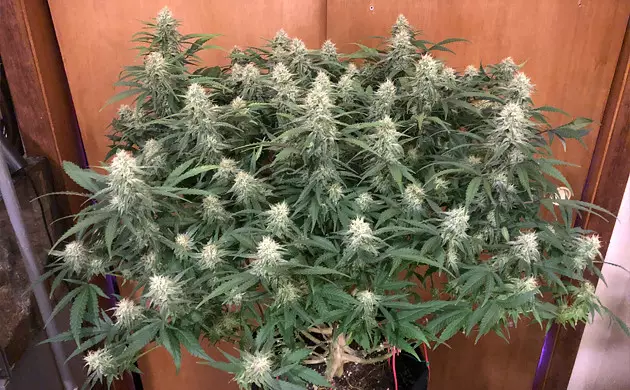
At this point, you’re ready to sit back and wait until harvest day. Watch as your plants grow outwards instead of upwards and utilize the full space of your garden. With this technique, it’s easy to fill an entire tent with a single plant.
Supercharge Your Plants with Easy ScrOGging!
Using this method of training cannabis plants, you’ll be able to increase yields, plant health, and overall bud quality. For indoor growers, ScrOGging is an invaluable technique. Everyone who grows weed inside should try it out, and it’s a favorite method among industrial-scale warehouse growers. Don’t just take our word for it, though – try it out yourself!
Herbies Head Shop expressly refuses to support the use, production, or supply of illegal substances. For more details read our Legal Disclaimer.




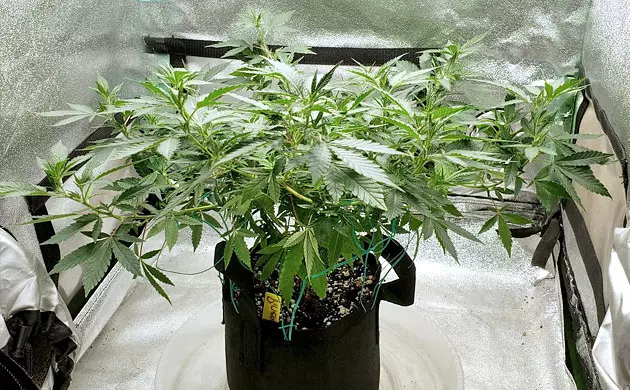
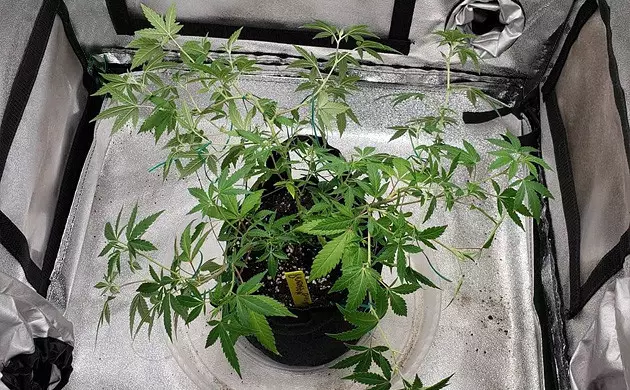



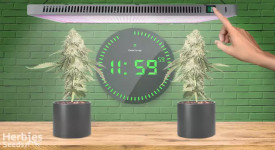






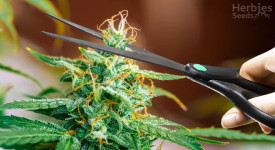
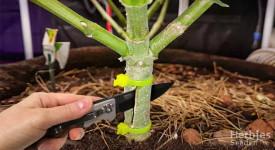
Thank you for leaving a comment for us!
Your feedback will be posted shortly after our moderator checks it.
Please note that we don’t publish reviews that: